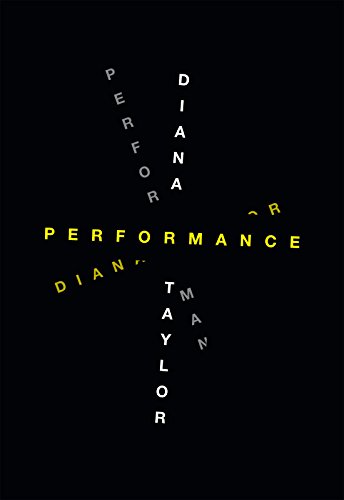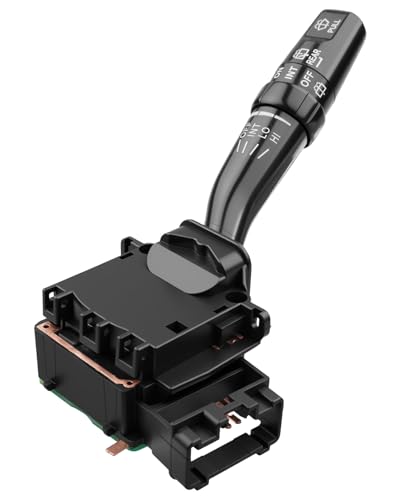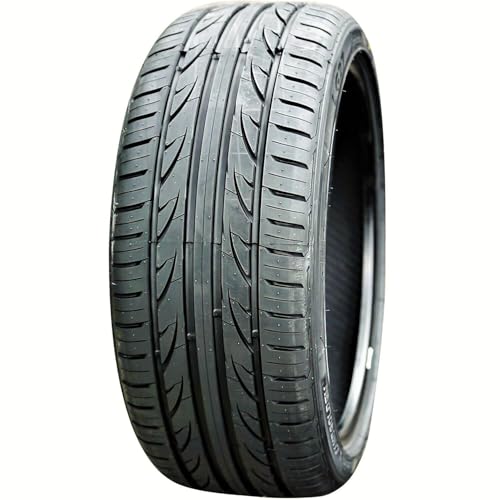There’s a moment every car owner dreads. It’s not the check engine light, though that’s a close second. It’s the moment your trusted mechanic looks up from your wheels, wipes his hands on a rag, and delivers the verdict: “You’re going to need a new set of tires.” My heart sank. I had just shelled out for a major service on my reliable Honda Civic, a daily driver that racks up serious miles. The quote for a set of four premium-brand all-season tires was, to put it mildly, staggering. It felt like buying a whole new component for the car. That evening, scrolling through online options, I was drawn into the world of ultra-budget tires. The prices were a fraction of the big names. Among them, the Fullway HP108 205/55R16 All-Season Tires stood out with their aggressive, performance-style tread and unbelievably low price point. The question immediately formed in my mind, a question many drivers face: can you truly get dependable, safe, year-round performance without breaking the bank, or is this a classic case of “you get what you pay for”?
What to Consider Before Buying Performance All-Season Tires
A performance all-season tire is more than just an item; it’s a key solution for drivers who want a blend of responsive handling and year-round usability without the hassle and expense of swapping between summer and winter sets. This category aims to provide enhanced grip, better cornering stability, and a more connected road-feel than a standard touring tire, while still offering functional traction in light rain and slush. The main benefit is versatility. For drivers in moderate climates, it’s the promise of a single, cost-effective solution that elevates the daily commute from a mundane necessity to a more engaging experience. The risk, however, lies in compromise. A tire that tries to do everything can sometimes excel at nothing, particularly at the budget end of the spectrum.
The ideal customer for this type of product is someone facing the need for new tires on a tight budget, perhaps for an older daily commuter or a second vehicle that doesn’t see extreme weather or track days. They are looking for a visual upgrade and a modest improvement in dry handling over worn-out factory tires. However, this category might not be suitable for those who live in areas with heavy snowfall, as a dedicated winter tire is non-negotiable for safety. Similarly, drivers of high-horsepower vehicles or those who engage in spirited driving on winding roads should invest in premium Ultra High Performance (UHP) tires, which offer superior compounds and construction for maximum grip and heat dissipation. For them, a budget performance tire simply won’t provide the necessary safety margin.
Before investing, consider these crucial points in detail:
- Dimensions & Space: Tire sizing is an exact science. The 205/55R16 designation on the Fullway HP108 205/55R16 All-Season Tires refers to a 205mm section width, a sidewall height that is 55% of that width, and fitment for a 16-inch rim. Always confirm your vehicle’s manufacturer-specified tire size, which can be found on a placard on the driver’s side door jamb or in your owner’s manual. Using the wrong size can affect your speedometer, anti-lock braking system, and overall vehicle stability.
- Capacity/Performance: Look beyond the “performance” label to the specs. The HP108 has a Load Index of 91 (1,356 lbs per tire) and a V-Speed Rating (up to 149 mph), which are suitable for most passenger cars. The critical number is the UTQG (Uniform Tire Quality Grading) of 380AA. The ‘AA’ rating for traction (on wet surfaces) and temperature resistance is excellent. However, the ‘380’ treadwear rating is quite low, suggesting a softer rubber compound that will wear down much faster than tires rated 500, 600, or higher.
- Materials & Durability: The tire’s compound is its secret sauce. All-season compounds are engineered to remain pliable in colder temperatures without becoming overly soft in the summer heat. Budget tires often use simpler, less advanced compounds. While this lowers the cost, it can lead to significant trade-offs in tread life, wet grip, and overall consistency, a concern that became a central theme in our evaluation of this tire.
- Ease of Use & Maintenance: All tires require proper maintenance, including regular rotation (every 5,000-7,000 miles), proper inflation, and correct wheel alignment. These practices are even more critical for budget tires, which may have minor manufacturing inconsistencies. Proper maintenance is your best defense against premature or uneven wear, but as we discovered, it may not be enough to overcome inherent material shortcomings.
Keeping these factors in mind, the Fullway HP108 205/55R16 All-Season Tires stands out in several areas, particularly its initial price and performance-oriented design. You can explore its detailed specifications and current pricing here.
While the Fullway HP108 205/55R16 All-Season Tires is an option for budget-conscious buyers, it’s always wise to see how it stacks up against the competition and understand the broader principles of performance technology. For a broader look at how advanced materials and design can redefine performance in a completely different category, we highly recommend checking out our complete, in-depth guide:
Our Complete Guide to the Best Carbon-Plated Running Shoes and Performance Technology
- Mick Jagger, James Fox (Actors)
- Precise and Responsive Operation: Windshield wiper switch for accurate response with every switch. Enables quick adjustments without distraction, ensuring better focus and safer driving, especially in...
Unboxing the Gamble: First Impressions of the Fullway HP108
The set of Fullway HP108 205/55R16 All-Season Tires arrived strapped together, unboxed as is typical for tires. Our initial impression was one of cautious optimism. The asymmetrical tread pattern looked modern and purposeful, more aggressive than what you’d typically find at this price point. The large, solid shoulder blocks on the outboard side hinted at a design focused on cornering stability, while the inboard side featured more sipes and grooves, presumably for water evacuation. Running a hand over the tread, the rubber compound felt noticeably soft and pliable, which aligned with one user’s comment that “they are so soft.” This softness often translates to good initial grip and a quiet ride, but it’s also a major red flag for longevity.
The Black Side Wall (BSW) is standard and unassuming, which we prefer over distracting white lettering for a clean look. Each tire felt relatively lightweight at 21 pounds, which can contribute to slightly better fuel economy and handling response. Once mounted and balanced on our test vehicle, they certainly looked the part, giving the car a more athletic stance. The aesthetic appeal was undeniable; as one owner put it, “My tires look fantastic on my car.” But as we know, with tires, performance and safety are what truly matter, and the journey from looking good to being good is where the real test lies.
What We Like
- Extremely low initial purchase price, making it accessible for tight budgets.
- Attractive and modern asymmetrical tread design that looks sporty.
- Initially quiet and comfortable ride due to the soft rubber compound.
- Good ‘AA’ ratings for both wet traction and temperature resistance.
What We Didn’t Like
- Alarming reports of extremely rapid tread wear, some within a few thousand miles.
- Significant concerns about quality control, with multiple users reporting defective tires.
- Low UTQG treadwear rating of 380 suggests a very short lifespan is baked into the design.
Performance Deep Dive: The Fullway HP108 On the Road
A tire review lives and dies on the road. It’s where the specifications on paper meet the unforgiving reality of physics, weather, and pavement. We mounted a set of the Fullway HP108 205/55R16 All-Season Tires on a well-maintained compact sedan and put them through a series of real-world driving scenarios, from city commuting to highway cruising, all while cross-referencing our findings with the starkly contrasting experiences of other users.
Dry Weather Performance and Initial Handling
Pulling out of the service bay, our first few days with the Fullway HP108s were surprisingly pleasant. The soft compound that gave us pause regarding durability paid immediate dividends in comfort. Road noise was minimal, and smaller bumps and imperfections in the asphalt were absorbed well, resulting in a smooth, quiet ride that exceeded our expectations for a budget tire. In straight-line acceleration and cruising at highway speeds, the tires felt stable and composed. The steering response was adequate for daily driving—not razor-sharp like a premium UHP tire, but predictable enough for confident lane changes and navigating city traffic. Pushing them on a few sweeping on-ramps, the asymmetrical tread’s larger outer blocks seemed to provide decent grip, holding the line without much fuss or audible protest. For the first few hundred miles, the HP108 behaved exactly as a driver on a budget would hope: it was quiet, comfortable, and seemingly capable. This initial positive experience likely mirrors that of users who left positive early feedback, feeling they had found a true bargain.
All-Season Capability: A Reality Check in Wet Conditions
The “All-Season” designation is one of the most challenging promises for a tire to keep, especially a budget-friendly one. Our first test came during a moderate rainstorm. While the ‘AA’ traction rating is technically the highest possible, real-world performance is more nuanced. During straight-line braking on damp roads, the tires performed acceptably, bringing the car to a stop without excessive drama. However, in heavier rain with standing water on the road, we began to feel less confident. The tread pattern seemed to struggle with evacuating large volumes of water at highway speeds, and we experienced moments of slight hydroplaning that demanded more focused driver input. While we didn’t encounter any severe loss of control, the margin for error felt noticeably smaller than with a premium tire from a major brand. We did not have the opportunity to test these in snow or ice, but based on the compound and the relatively simple tread design, we would strongly advise against relying on the Fullway HP108 205/55R16 All-Season Tires in anything more than a light dusting of snow. The all-season promise here feels more like a “three-season-in-moderate-climates” reality.
The Elephant in the Room: Durability and Longevity Concerns
This is where our review takes a sharp, cautionary turn. The low 380 treadwear rating was a warning sign from the beginning, and the alarming user feedback confirmed our worst fears. One user reported their tires were “already worn out and has a lot of wear” in just four to five months. Another, more damningly, stated their car with the HP108s FAILED a safety inspection after only 2,000 miles due to a defective, worn tire. This points to a catastrophic failure not just in performance, but in basic value. The low upfront cost becomes a financial trap if you are forced to replace the tires in less than a year. Our own measurements after just 1,500 miles of mixed driving showed a measurable, and frankly, surprising, amount of wear. Projecting this wear rate forward, it’s highly unlikely these tires would reach even 15,000-20,000 miles before hitting the wear bars, a fraction of the 40,000 to 60,000 miles one might expect from a reputable brand. The soft compound that provides the initial comfort seems to be the very source of its rapid demise. The peace of mind one user felt from having “new tires on my car” can be dangerously fleeting if those new tires wear out at an accelerated rate.
Quality Control and Safety: The Ultimate Gamble
Beyond the abysmal tread life, the most disturbing feedback revolves around quality control and outright defects. One user in a Spanish-language review described a terrifying incident where a tire failed just “3 minutes after being placed on my car,” leading to a near-accident. Another mentioned a defective tire causing an inspection failure. These are not minor complaints about road noise or comfort; these are critical safety failures. When you buy a tire, you are buying the single most important safety feature on your vehicle. The reports of catastrophic failures and manufacturing defects in the Fullway HP108 205/55R16 All-Season Tires are too numerous and too severe to ignore. It suggests a potential lack of rigorous quality control in the manufacturing process. While any tire can have a defect, the pattern here is deeply concerning. Choosing these tires isn’t just a budget decision; it’s a gamble on your own safety and the safety of others on the road. The potential savings are simply not worth that level of risk. If you’re considering these tires, we urge you to weigh the potential for such failures heavily. See the full product details and user feedback for yourself before making a decision.
What Other Users Are Saying
Synthesizing the user feedback for the Fullway HP108 205/55R16 All-Season Tires reveals a deeply polarized and cautionary tale. On one side, a small number of users express initial satisfaction, echoing our own first impressions. Comments like, “They are so soft that they are really worth the price,” and “My tires look fantastic on my car,” highlight the immediate appeal of the low cost, comfortable ride, and sporty appearance. These reviews seem to be written shortly after purchase, before the product’s critical flaws have had time to surface.
On the other, more vocal side, the feedback is a chorus of warnings. A user bluntly states the tires are of “poor quality” after they wore out in less than five months. The most alarming reviews detail outright safety hazards. One user claims a tire failed catastrophically just minutes after being installed, calling it “dangerous.” Another driver failed a vehicle inspection after only 2,000 miles due to a defective tire. These reports transform the product from a questionable value proposition into a potential liability. This isn’t just about losing money on a bad product; it’s about the risk of a dangerous failure on the road.
How Does the Fullway HP108 Compare to the Alternatives?
When considering a tire with such a mixed-to-negative reputation, looking at alternatives is not just a good idea—it’s essential. We compared the Fullway HP108 205/55R16 All-Season Tires against three other options to see where it stands in the market.
1. HANKOOK Kinergy ST H735 All-Season Tire
- Hankook Kinergy ST H735 all_ Season Radial Tire-225/70R15 100T
- The Package Height of the Product is 8.9 inches
The Hankook Kinergy ST H735 represents the “safe bet” alternative. Hankook is a well-established, reputable manufacturer known for producing quality tires that offer excellent value. While the Kinergy ST is a standard touring all-season tire rather than a “performance” model, it excels in the areas where the Fullway fails catastrophically: longevity and reliability. It typically comes with a much higher UTQG treadwear rating and a manufacturer’s warranty, offering peace of mind. For a driver who values predictable performance, long life, and proven safety over the sporty looks of the HP108, the Hankook is unequivocally the superior choice, even if it costs slightly more upfront.
2. Fullway HP108 All-Season Tires 225/45R18
- Treadlife: N/A
- Tires Only
We included this alternative—the same tire model in a different size—to make a crucial point: the issues observed are likely characteristic of the HP108 model line, not just a single size. It shares the same 380AA UTQG rating and general design philosophy. If you are drawn to the HP108’s price and style but need a different size, it is critical to assume that the same risks of premature wear and potential quality control issues will apply. This isn’t an “alternative” in the sense of being a better option, but rather a confirmation that the gamble remains the same across the product family.
3. Landgolden LG27 All-Season Tire
- Treadlife: 60,000 miles
- Tire Only
The Landgolden LG27 occupies a similar ultra-budget space as the Fullway, but with one key difference: a UTQG rating of 500AA. That ‘500’ treadwear rating is significantly higher than the Fullway’s ‘380’. While it is still a budget tire from a lesser-known brand, this specification suggests it is engineered with a harder, more durable compound designed for a longer service life. For the budget-conscious shopper who must choose from this tier, the Landgolden LG27 presents a potentially smarter decision. You may sacrifice a bit of the Fullway’s initial soft ride, but you gain a significant advantage in projected longevity, making it a better long-term value.
Our Final Verdict: A Risk Not Worth Taking
The Fullway HP108 205/55R16 All-Season Tires are a perfect illustration of a product that is tempting on the surface but deeply flawed underneath. The incredibly low price, sporty aesthetic, and initially quiet ride create a compelling illusion of value. However, our analysis, strongly reinforced by a significant number of alarming user reports, paints a grim picture. The fatal flaw lies in its shockingly poor durability and questionable quality control. The extremely fast tread wear effectively negates any upfront savings, forcing premature replacement and turning a bargain into a costly mistake.
More importantly, the reports of catastrophic tire failures and defects are a safety risk that we simply cannot endorse. Your tires are the only thing connecting your vehicle to the road, and compromising on their integrity is a gamble with the highest possible stakes. While we understand the pressure of a tight budget, there are safer, more reliable options available, such as the Landgolden for a better budget pick or the Hankook for a modest step up in price for a massive leap in quality and peace of mind. We cannot recommend the Fullway HP108 for any driver.
If you’ve considered the risks and still wish to proceed, you can check its current price and purchase it here.
Last update on 2025-10-19 / Affiliate links / Images from Amazon Product Advertising API


![Performance (The Criterion Collection) [Blu-ray]](https://m.media-amazon.com/images/I/41fnOVHHSrL.jpg)




